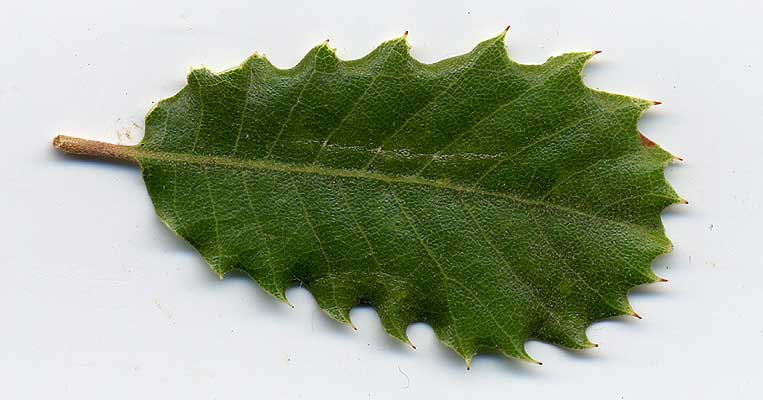| Quercus faginea | |
| Author | Lam. 1783 Encycl. 1: 725 |
| Synonyms |
aegilopifolia
Pers. 1807 |
| Local names | roure de fulla petita (Catalonia) ; quejigo ; roble carrasqueño ; portuguese oak; |
| Range | Spain; Portugal; the Baleares; Algeria; Morocco; 800 to 1900 m; |
| Growth habit | 10-15
m; sometimes a shrub; crown broad; |
| Leaves | 4
x 1,5 cm; leathery; semi-evergreen; oval to oblong-elliptic; variable
in shape; base cordate or rounded; apex obtuse; margin often wavy and
revolute; 8-12 vein pairs, straight and parallel, ending in triangular,
regular, acute, mucronate teeth; bright green above, with at first a short,
stellate pubescence, becoming hairless; densely yellowish-grey tomentose
beneath with small stellate hairs (120-150µ long rays); some intercalary
veins ; petiole hairy 0,5-1,4 cm; |
| Flowers | March-April; male catkins in clusters of 4-5; female catkins on short peduncle; |
| Fruits | acorn
cylindrical, 2.5 cm long, 1.3 cm wide, light yellow; singly or paires
on a peduncle very short; enclosed 1/4 to 1/5 by cup; cup half-round,
with oval or triangular, slightly lanceolate, convex, hairy scales; maturing
in 1 year; |
|
Bark, twigs and |
bark
thick, furrowed, scaly, grey or brown; twig grey or whitish, pubescent
at first, becoming glabrous; bud ovoid tomentose; |
| Hardiness zone, habitat | hardy
(zone 7); prefers moist, calcareous soils; often bears galls; |
| Miscellaneous | --
A. Camus : n° 152; -- Sub-genus Quercus, Section Quercus, Series Roburoid; -- The specific name "lusitanica" must be avoided: it is too much ambiguous because applied to several species: 1/ Q. lusitanica Webb and auctores = Q.faginea Lam. 2/ Q. lusitanica Boiss. = Q. infectoria Oliv. 3/ Q. lusitanica Lam. = Q. fruticosa Brot.
|
| Subspecies and varieties |
There
are 2 sub-species: --- The taxon named Q. faginea subsp. alpestris
(Boiss.) Maire 1960 is today described under the name x
alpestris by F.M. Vàzquez &
al. 2014: see this name.
|
| Pictures |
|








